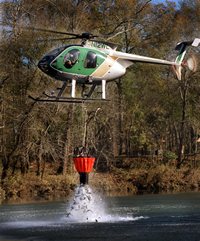Trout History in SC & Management
History
Perhaps more than other wildlife, the trout’s tenuous survival in South Carolina can be traced back to the effects of man’s activities on the environment. Since trout only live in pure, cold water, they are highly sensitive to excessive silt loads, increased water temperatures and lowered oxygen levels. When improperly conducted, practices such as logging, agriculture, residential development and dam and highway construction can effectively destroy many trout-producing habitats. At the same time, a growing number of anglers adds to the pressure on the remaining populations.
The “eastern brook trout” is the only species of the salmon and trout family native to the southern Appalachians and South Carolina. Though called a trout since its discovery by early European settlers, it is actually a char. Biologists believe the brook trout first arrived in the southern Appalachians during the Pleistocene Epoch, which began about 1.8 million years ago and ended about 11,000 years ago. Prior to then, it occurred in the region from New Jersey north to the Hudson Bay. Aided by the cold climate created by advancing and retreating glaciers, the brook trout found a new home in the southern Appalachians.
The brook trout’s security in the unspoiled mountain wilderness gradually changed with the influx of European settlers in the 1800s. Records from the 1870s note the presence of healthy populations of eastern brook trout in the upper Chattooga River. Land use practices of the late 19th and early 20th centuries forced the brook trout to retreat to the state’s most remote headwaters.
Fortunately, the trout’s decline did not pass unnoticed. The rainbow trout from the Western US and the brown trout from Europe were imported. These introductions had both positive and negative implications. On one hand, brown and rainbow trout were arguably able to occupy warmer water temperatures in the degraded habitat, and extend farther downstream of historic brook trout habitat. Therefore, these introductions likely increased available natural trout waters, alerted conservationists to protect the trout’s habitat and helped create the vast southern Appalachian trout resource anglers enjoy today. On the other hand, the introduction of non-native trout resulted in the displacement of brook trout from their native range in many cases. The South Carolina Department of Natural Resources (SCDNR), the United States Forest Service and Trout Unlimited are working in partnership to restore the native brook trout to much of its historical range through a program called the Eastern Brook Trout Joint Venture and, in South Carolina, “Back the Brookie.”
Management
Since South Carolina has only a comparatively small amount of water suitable for trout management, there is very little room to make mistakes. With the help of a supportive public over the years, the trout resource and trout fishing have been preserved. Trout management is defined as any activity having a positive impact on the well being of the trout resource, such as habitat protection and management, population management, regulations, stocking and research. Habitat preservation is the foundation of successful trout management. Every mile of natural stream lost to impoundments, every degree that habitat alteration increases water temperature and every activity that increases the silt load in streams means less habitat and fewer trout. Through public education and outreach, habitat protection and restoration, and population monitoring and management, trout managers are trying to reverse errors of the past. Private landowners of trout streams are encouraged to contact local SCDNR biologists for information and to learn more about SCDNR programs for protecting and improving trout habitat.
Stocking

In the early 1930s, the SCDNR and U.S. Fish and Wildlife Service began trout culture and stocking programs. Managers concentrated on stocking fingerling size trout, in the early years, in an attempt to reestablish sustaining trout populations or to establish put-grow fisheries where natural trout reproduction was limited. As the program evolved in the 1950s and 1960s, the S.C. Wildlife and Marine Resources Department (today’s SCDNR) began an extensive trout stocking program to provide more trout fishing opportunities for the angler. This program included expanding trout management in seasonal, hatchery-supported mountain trout waters by stocking more catchable sized trout. The SCDNR now annually stocks approximately 500,000 fingerling and catchable sized brook, brown and rainbow trout.
Approximately fourteen mountain streams are stocked on a regular basis with catchable sized (9-12 inch) trout from March through June and again during October and November. Additional backcountry streams are stocked less frequently (seasonally) to maintain good trout fishing. These streams are typically located in remote settings. Water temperatures in receiving waterbodies and available fish largely influence stocking during July through September. Over 300,000 catchables are distributed under this program annually along with as many as 100,000 fingerlings. SCDNR does not release the time and location of stocking runs. These efforts are aimed toward perpetuating South Carolina’s trout resource and providing a satisfactory angling experience for the sportsman. Healthy trout fisheries are the priceless reward for all South Carolinians for proper trout management. To see a weekly trout stocking summary, visit https://www.dnr.sc.gov/fish/stocking/results
